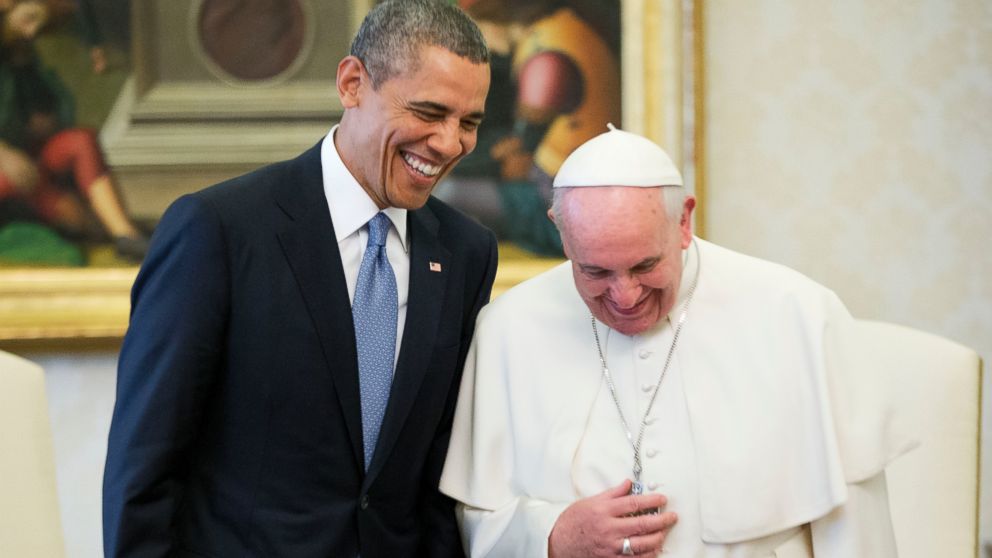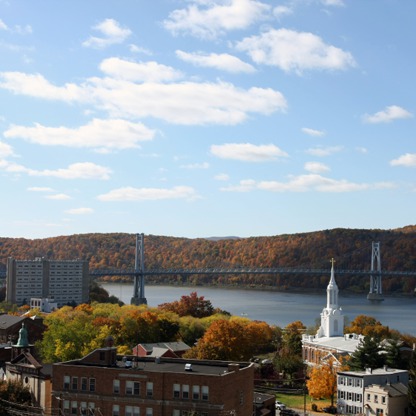Fall is a great time to travel, and there is a well-worn path heading to the most popular leaf-peering spots. To enjoy the Fall colors, you have to try to get your reservations early for fall foliage viewing, and then fight the crowds, which doesn’t sound like much fun to me. But then again I try to stay away from crowds whenever I can, so if you are looking for a different way to experience fall colors, here are my best suggestions for fine fall foliage stay-cation destinations.
Take the Hudson line from gorgeous Grand Central Station to Poughkeepsie, New York. Once you arrive, there are plenty of places to see. Begin with a walk across the Hudson. Originally built as a railroad bridge in 1889, the Walkway Over the Hudson opened in 2009 as a pedestrian park. It is a wonderful vantage point to view not only the Hudson River and ships passing by, but also fall colors. Measuring 1.28 miles from one end to the other, and 212 feet above the Hudson, it is the longest elevated pedestrian bridge in the world.
The Poughkeepsie Metro-North Railroad station serves Poughkeepsie, New York and surrounding areas as the north end of the Hudson Line. It is also served by many Amtrak trains, which continue north to Albany and points beyond, and south to New York City's Pennsylvania Station. Trains leave for New York every hour on weekdays, and about every 25 minutes during rush hour.
It is 73.5 miles (118.3 km) from Grand Central Terminal and travel time to Grand Central is about one hour, 46 minutes. Poughkeepsie is 8.5 miles (13.7 km) from New Hamburg, the next station to the south. This is the longest distance between stations on the Hudson Line, the longest on any Metro-North main line, and the third longest on the entire system.
Built in 1918, the main station building is meant to be a much smaller version of Grand Central. It was a source of civic pride when it opened. In 1976 it was added to the National Register of Historic Places; it and Philipse Manor are the only Hudson Line stations outside Manhattan to be so recognized.
However, if you wish to stay inside the city, there is an abundance of natural beauty in NYC’s Pelham Park. Don’t discount urban leaf viewing; sometimes you can find great autumn serenity in our own backyards even if it is nearby NYC skyscrapers. Years ago when I moved back to New York, I decided to move to City Island. This is a place seldom visited by downtown locals, or tourists. Pellham Park is literally and figuratively full of surprises, from Orchard Beach, to horseback riding to and large boulders that folks wouldn’t expect to find in NYC. You’ll also find beautiful views of the bay that you may even forget you are in the city at all.
More than three times the size of Manhattan’s Central Park, Pelham Bay Park is the City’s largest park property. Visitors to the park enjoy miles of bridle paths and hiking trails, Orchard Beach, the Bartow-Pell Mansion, two golf courses, and a breathtaking 13-mile saltwater shoreline that hugs the Long Island Sound.
The native Siwanoy Native Americans originally inhabited this area, attracted by the plentiful deer, turtle, and sturgeon. When the Dutch West India Company purchased the land from them in 1639, they termed the area "Vreedelandt," meaning land of freedom. However, after years of unsuccessful attempts to occupy the land, the Siwanoy still controlled the area. The most famous of these failed communities was the short-lived English colony founded by Anne Hutchinson in what is now the northwest corner of this park. Having fled religious persecution in Puritan Massachusetts, Hutchinson and most of her party were killed by Native Americans just a short time later in 1643. The nearby Hutchinson River bears her name.
Englishman Thomas Pell purchased 50,000 acres of land from the Siwanoy in 1654. Parkgoers can visit the site of the tree where he and Siwanoy leader Chief Wampage made their pact. In 1666, King Charles II chartered this land as part of the Manor of Pelham. During the Revolutionary War, Pell's land was part of the buffer between the British-held Manhattan and rebel-held Westchester. Hiding behind stone walls, 600 Massachusetts Patriots stopped the British and Hessian forces from making their way north from Rodman’s Neck. Remains of the walls can be seen in the Split Rock Golf Course. A plaque at Glover's Rock commemorates this battle at Pell Point.
After the Pell family sold most of the land, Robert Bartow, a publisher and Pell descendant, purchased the remainder in 1836. He built the Bartow-Pell Mansion in 1842, a grey stone mansion with Greek Revival interiors located on Shore Road. It remained in the family until 1888, when the City acquired the estate. The mansion and its grounds have been maintained by the International Garden Club Incorporated since 1914. The site opened as a museum and educational center in 1947. The park’s other historic residence, Hunter Mansion, was built in 1804. It once housed a collection of fine wines as well as paintings by European masters. Today only fragments of the foundation and landscaped features endure.
In the late 1800s, Bronx resident and founder of the New York Parks Association John Mullaly spearheaded a movement to retain some of the natural areas before they were destroyed by overdevelopment. The State Legislature appointed a commission to acquire large tracts of land to form a Bronx parks system. Pelham Bay Park officially became Bronx Parks Department property in 1888 when the City of the Bronx purchased the land for a total cost of $2,746,688 and changed the collection of estates into a unified park. The original site was over 1,700 acres.
The park evolved from natural woodland into an enhanced recreational facility when Parks Commissioner Robert Moses (1888–1981) filled the park with playgrounds, comfort stations and other amenities. He upgraded the Pelham and Split Rock Golf Courses in the 1930s and began one of his most ambitious park projects: the building of today’s Orchard Beach. Eager to increase public use of the area, Moses initiated an $8 million project that added a new parking lot and a 90,000-square-foot bathhouse complex. When it opened in 1936, the landfill-fortified beach attracted thousands of bathers. In 1947, the beach was extended 1.25 miles by filling in the shallow water in LeRoy’s Bay between Hunter and Twin islands, adding 115 acres of parkland. When the Department of Sanitation received permission to use the area south of the Pelham Bridge as a landfill, conservation groups succeeded in having the State designate 375 acres of marshland as a wildlife refuge. The Thomas Pell Wildlife Refuge was created in 1967.
Renovations continue each year. A $2.3 million project funded by Mayor Rudolph Giuliani and Borough President Fernando Ferrer to reconstruct portions of the Bathhouse at Orchard Beach was completed in 2000. That same year, Mayor Giuliani partially funded an $893,000 restoration of a salt marsh at Pelham Bay Lagoon adjacent to the northwest corner of the Orchard Beach parking lot. In 2001, former NYC Council Member Madeline Provenzano funded a $600,000 monument conservation that benefited several monuments in the park including the Bronx Victory Memorial (1933) commemorating the Bronx casualties in World War I.





